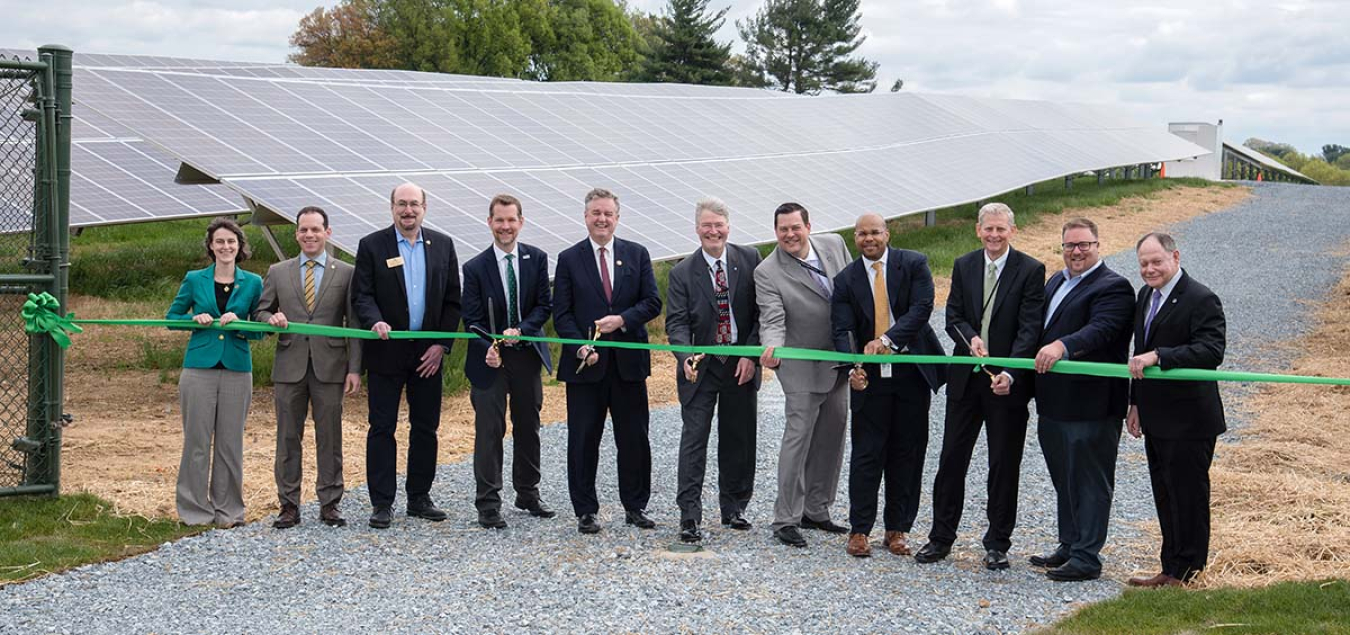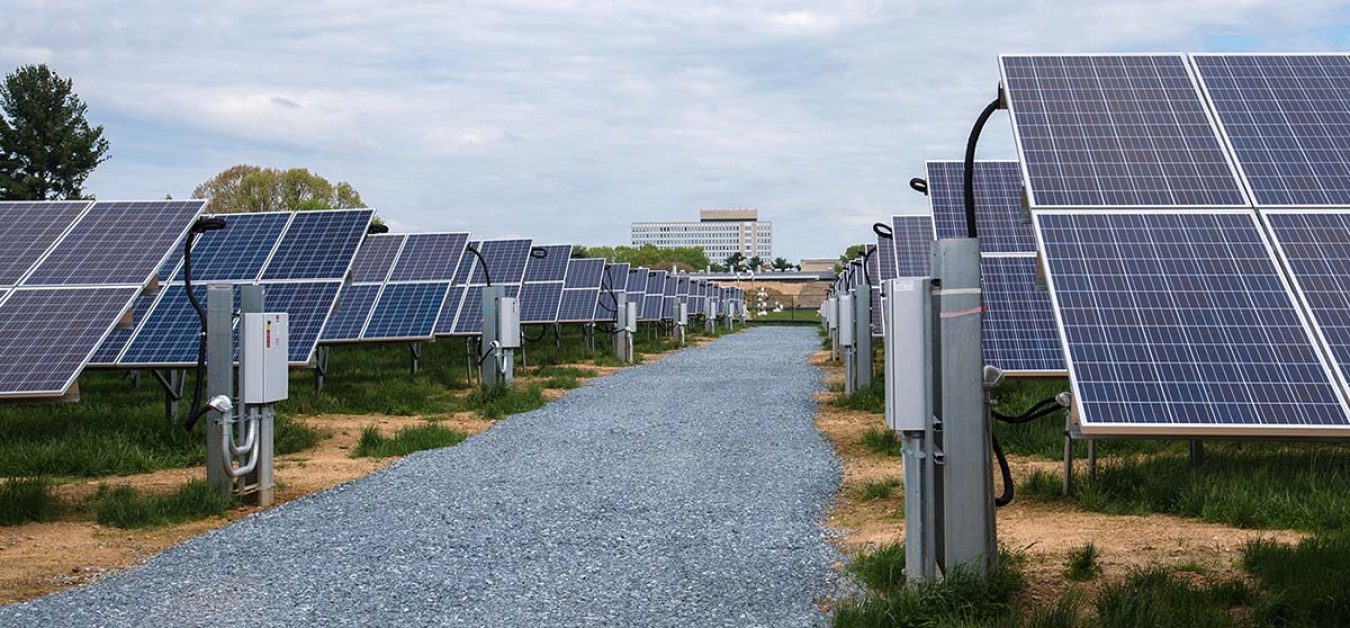
To mark Earth Day 2019, Federal Energy Management Program (FEMP) Director Rob Ivester and ESPC ENABLE Program Manager Ira Birnbaum joined officials from the U.S. Department of Commerce, National Institute of Standards and Technology (NIST), the energy service company (ESCO) and financier team of Legatus6 and Constellation New Energy, and Congressman Dave Trone at a ribbon-cutting ceremony for the NIST solar photovoltaic (PV) project.
The project, implemented using FEMP’s Energy Savings Performance Contract (ESPC) ENABLE program, is a 5 MW DC, 4 MW AC ground-mounted PV system using an energy sales agreement (ESA)—the second under ENABLE. It is the largest PV system installed at a civilian government agency that uses all of the produced electricity on-site, according to the National Renewable Energy Laboratory (NREL).
The project was awarded to Legatus6, a service disabled veteran-owned small business solar developer and ESCO, with financing provided by Constellation New Energy. It was the sixteenth project awarded under ESPC ENABLE (the current number of ESPC ENABLE projects awarded now stands at 19).
Project Details
The Earth Day 2019 showcase project provided an outstanding example of one of the U.S. Department of Energy's Office of Energy Efficiency and Renewable Energy's key objectives: energy affordability. The project represents an economical clean-energy solution that reduces government energy costs. The project generates significant infrastructure development and a boost to manufacturing, as well as excellent construction and other trades-related jobs—and all this at a cost savings to the U.S. government.

NIST installed a 5 MW DC, 4 MW AC ground-mounted PV system using an ESPC ESA.
The total contract amount is $10,225,198, making it the largest ESPC ENABLE project to date. Total guaranteed cost savings are $11,720,431. NIST currently purchases electricity from non-renewable sources at $0.1017/kWh. The proposed price for electricity produced by the solar PV system is $0.0709805 per kWh in operational year one, for a net savings of $0.0307195 per kWh. Over the 20-year contract period during which the ESCO will own, operate, maintain, repair and replace the system, NIST will gain the following benefits:
- Receive at least 88,507,689 kWh of electricity generated by the solar PV system
- Displace $ 11,720,431 of electricity purchased from its commercial provider
- Realize a net savings of $ 3,540,273.
After NIST purchases the system at the end of the contract, savings are anticipated for an additional 10 years of solar generation, during which NIST is expected to save an additional $8,297,618, bringing the total net electric bill savings to almost $12 million.
After contract award, the project was acquired by Constellation New Energy, which assume its role as the owner of the solar PV system for the next 20 years. The solar PV system will be owned and operated by the ESCO for the 20-year contract period. As per ESPC ESA requirements, at the end of the contract, NIST will purchase the system at its fair market value.
Noteworthy Project Features
FEMP provided support in terms of the ESPC ENABLE process, including advice on structuring and rating proposals, contracting, project facilitation, and technical support from NREL entailing support throughout the investment grade audit, including reviewing the final version and final proposal, and on structuring the ESPC ESA. FEMP and NREL support was provided throughout the procurement process.
A unique aspect of the project is that it was originally bid under a standard government-owned scenario before the IRS issued its ESA revenue procedure clarifying how developers could utilize renewable energy investment tax benefits in conjunction with a federal project. As a single energy conservation measure project, NIST took FEMP’s advice to bid the project on the basis of the offerors’ installed cost-per-KWh. After ranking all proposals on this basis under a government-owned scenario, the IRS revenue procedure was issued, and the offerors were asked to submit proposals under a private-ownership ESPC ESA scenario. The result was that cost to the government was significantly lower—about 25%. This dual-track bidding, while unplanned, provided a perfect case study of the benefits of using an ESPC ESA to reduce project costs and provide best value to the government.
A broadly applicable lesson the project shows is that due to improved economics of PV systems from falling technology costs in combination with using the ESPC ESA structure, there are ample opportunities to add PV at facilities even where ESPC projects were previously implemented (NIST did an earlier ESPC project at the same facility but PV was not economical at that time).
For additional project information, contact John Bollinger at NIST.
For information on ESPC ENABLE, see the information on the FEMP website under Energy and Project Procurement Development Services, or contact Ira Birnbaum at FEMP.
